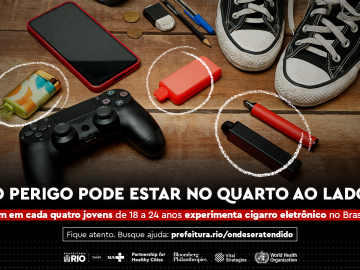FDA Commissioner Promotes Nicotine-Reduction Plan
In a country where smoking was once ubiquitous, the landmark 1964 US Surgeon General’s Smoking and Health report spurred 50-plus years of sweeping anti-tobacco initiatives that have dramatically reduced US smoking rates and saved millions of lives.
Yet, smoking remains the leading cause of preventable disease and death in the US, claiming the lives of 480,000 Americans every year.
The numbers are unacceptable, FDA commissioner Scott Gottlieb told an audience October 19 at the Johns Hopkins Bloomberg School of Public Health, where he discussed the agency’s regulatory proposal to reduce nicotine to non-addictive levels in cigarettes. The move, according to FDA estimates, could prevent up to 8 million tobacco-related deaths over time, as future generations are spared from smoking addiction.
“The FDA needs to envision a world where cigarettes lose their addictive potential through reduced nicotine levels,” Gottlieb said. “Unless we change course, 5.6 million children alive today will die from tobacco use.”
Joining Gottlieb at the event were Mitch Zeller, director of the FDA’s Center for Tobacco Products, and an academic panel of tobacco experts, including the Bloomberg School’s Joanna Cohen, Dorothy Hatsukami, from the University of Minnesota and Kenneth Warner, from the University of Michigan.
Central to the proposed strategy, announced in July, is recognition of a “continuum of risk” across nicotine delivery systems. In traditional combustible tobacco products like cigarettes nicotine combines with smoke particles to create a highly addictive and deadly chemical mix, while non-combustible options like e-cigarettes are potentially less harmful.
Warner stated that the FDA can expect tough tobacco industry opposition to the proposal, which he said has the potential to be “one of the great public health developments of the past half century or more.”
A key goal of the FDA’s plan is to encourage development of innovative tobacco and non-tobacco products that may be less dangerous than cigarettes and could help smokers transition to a potentially safer product.
“How do we feel if there are some people who, in order to avoid returning to cigarettes, have to be using those products forever,” Zeller asked. “We need to get a better handle, from an evidentiary standpoint, to help drive and inform policy.”
In concert with the FDA’s nicotine regulation proposal, the agency will examine the use of flavors in cigarettes and other nicotine-containing products. Although there have been anecdotal reports that flavors can help adults quit smoking, public health advocates worry about the appeal to children, especially kid-friendly flavors like cotton candy and bubble gum.
“Even though they [kids] may only experiment and not continue, it doesn’t look right and I think there are certain flavors that should not be sold on the market,” said Dorothy Hatsukami, a professor at the University of Minnesota.
Gottlieb acknowledged that there are many unanswered questions about the potential risks and benefits of such products, and emphasized that the FDA will look to future research for more information as the proposal to reduce cigarette’s addictive chemical mix works its way through the regulatory review process.
“Science will be our guide,” he said.
Scott Gottlieb, M.D., Commissioner of Food and Drugs speaking at the Johns Hopkins Bloomberg School of Public Health October 19, 2017. Image by Mitro Hood.




